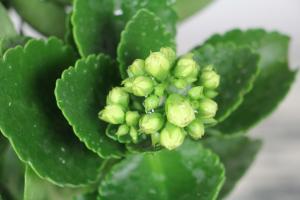How Cold Can Plants Like Tomatoes and Peppers Survive
Tomatoes and peppers are popular garden plants that require specific environmental conditions to thrive. One of the most important factors affecting the growth and yield of these plants is temperature. While both tomatoes and peppers are typically grown in warm climates, they can withstand some cold temperatures as long as certain precautions are taken. In this article, we will explore how cold tomatoes and peppers can survive and provide tips on how to protect them from frost damage.
Temperature Tolerance of Tomatoes
Tomatoes are warm-season crops that require temperatures between 60°F and 90°F (15°C and 32°C) to grow and produce fruit. However, they can tolerate cooler temperatures if they are not exposed to frost. Tomatoes can survive temperatures as low as 33°F (1°C) for short periods but will begin to suffer damage if the temperature drops below 28°F (-2°C) for extended periods.
Temperature Tolerance of Peppers
Like tomatoes, peppers are also warm-season crops that prefer temperatures between 70°F and 90°F (21°C and 32°C). However, they can tolerate cooler temperatures than tomatoes. Peppers can survive temperatures as low as 50°F (10°C) for short periods but will develop frost damage if the temperature drops below 40°F (4°C) for extended periods.
Protecting Tomatoes and Peppers from Cold Temperatures
To protect tomatoes and peppers from cold temperatures, there are several strategies that gardeners can use. One option is to cover the plants with row covers or cloths to provide some insulation. This will trap the heat radiating from the soil and help keep the plants warm. Another option is to use mulch around the plants to help insulate the soil, keeping the roots warm.
Gardeners can also use water to help protect their plants from frost damage. Water has a high heat capacity, and when it freezes, it releases heat. By watering the plants before a frost, gardeners can help to protect them by using the heat released during the freezing process to keep the plants warm.
If the plants do suffer frost damage, gardeners can remove any dead or damaged foliage and wait to see if the plants recover. If they do not recover, the plants will need to be replaced.
Conclusion
In conclusion, tomatoes and peppers are warm-season crops that can tolerate some cooler temperatures as long as they are not exposed to frost. Gardeners can protect their plants from cold temperatures by using row covers or cloths, mulch, and water. However, if the plants do suffer frost damage, they may need to be replaced. By understanding the temperature tolerance of these plants and taking appropriate precautions, gardeners can ensure a bountiful harvest of tomatoes and peppers.

 how many times do yo...
how many times do yo... how many planted tre...
how many planted tre... how many pine trees ...
how many pine trees ... how many pecan trees...
how many pecan trees... how many plants comp...
how many plants comp... how many plants can ...
how many plants can ... how many plants and ...
how many plants and ... how many pepper plan...
how many pepper plan...






























